eBirders Shining a Brighter Light on the Distribution, Habitat, and Vocalizations of the Asir Magpie
Guest blog by Gregory Askew
Prior to November 2017, when I first moved to Saudi Arabia, only six observations of Asir Magpie Pica asirensis, a range-restricted corvid species found in the highlands of southwest Saudi, had been reported to eBird, an online database of bird observations created and managed by the Cornell Lab of Ornithology. This was a reflection of not just the paucity of observers in the country up to that point but also of how few had been using eBird compared to other countries across the OSME region and the West. As of this writing, though, there are a total of 46 observations, thanks in part to a growing number of eBirders in the Kingdom. With possibly little more than 100 pairs of the magpies remaining, even casual observations from birders and bird photographers can help fill gaps in what is already known about this endangered endemic. Indeed, to date, eBird reporting has not only expanded the multimedia collection for the magpie in Cornell’s Macaulay Library but has also enhanced our understanding of its current distribution, habitat requirements, and vocalizations.
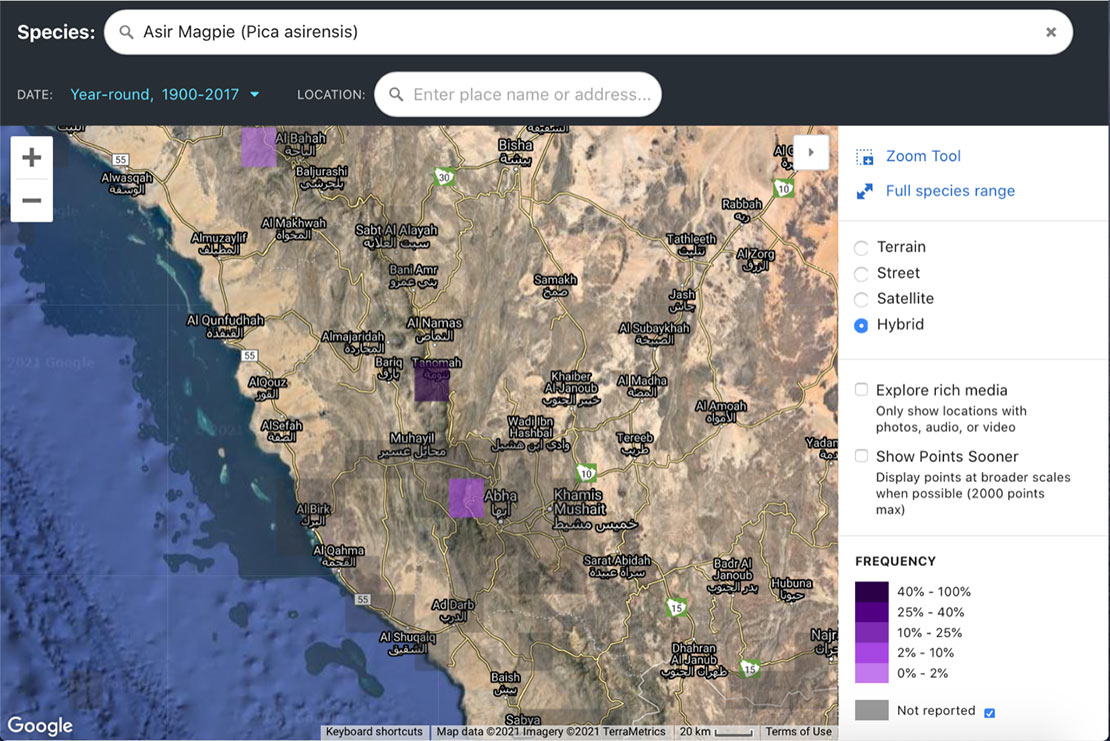
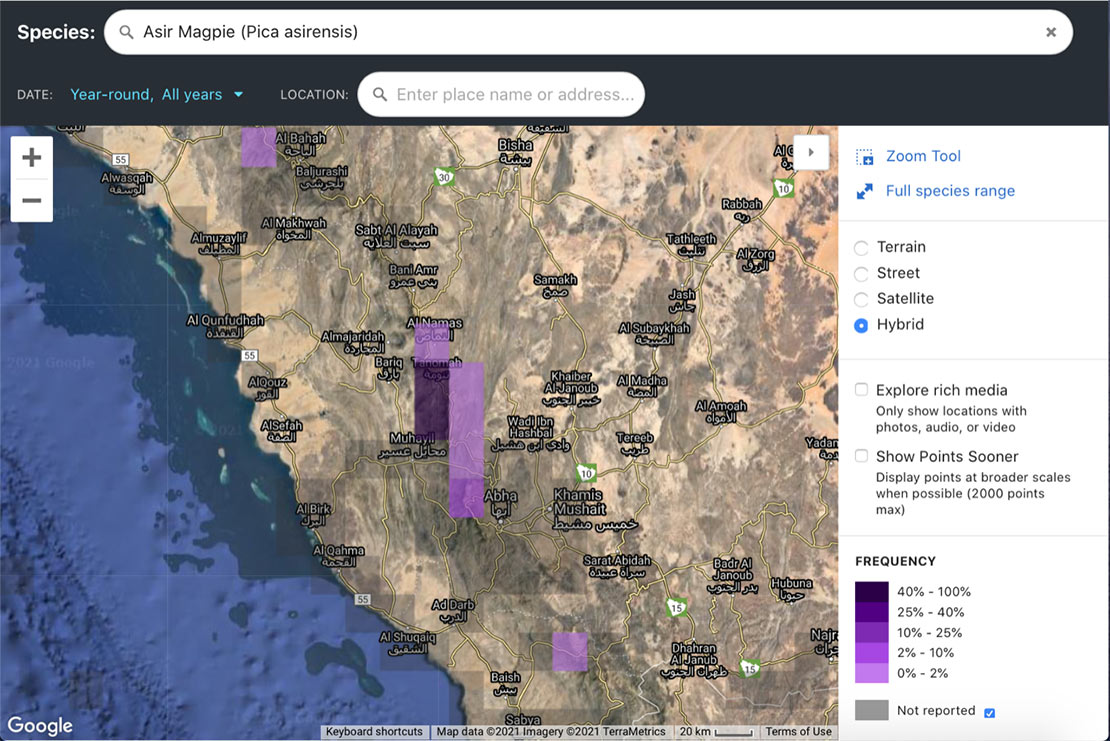
The Asir Magpie’s range is said to have once extended from as far north as Taif in the Makkah region (Boland & Suhaibany 2020) south to the Jazan region, close to the border with Yemen. However, the heart of its current range is in the highlands of the Asir region, having contracted dramatically over the past few decades. The extent to which it has contracted, however, depends on the data set being considered. The Birds of Saudi Arabia says the current range of the magpie is restricted to a 37 kilometre stretch generally above 2100 meters between Al Namas to the north and Billasmer to the south (Boland & Suhaibany 2020), but several observations reported to eBird since 2018 indicate that the extent of the contraction may be slightly less severe. There were ten records from the Billahmer area between 2018 and 2020, the furthest south of which nearly 20 kilometres further than Billasmer. Excitingly, these weren’t the only observations to challenge what we thought we knew of the Asir Magpie’s current distribution. In May of this year, I observed a total of nine magpies over 125 kilometers south of the nearest record in Billahmer on Jebel Al Qahar in the Jazan region, a former stronghold from which the magpie population was believed to have been lost. This was the first observation at this site since a survey in 2010 detected only a single pair (Jennings et al 2010).
Most of the juniper stands that once blanketed Jebel Al Qahar have long since died off, yet, despite this, a small population appears to be persisting on the mountain. Considering the continued presence of magpies here, we might revise our understanding of its habitat requirements, particularly the elevations at which it may occur as well as in which types of terrain. The magpies on Jebel Al Qahar, the highest elevation of which does not exceed 2000 meters, were observed at 1900 meters in fairly exposed terrain with foraging access to an area of terrace fields less than two kilometers away at just over 1600 meters. This suggests that magpies might still occur in habitat, perhaps remote, in the Asir and Jazan regions with conditions similar to those on Jebel Al Qahar, where access to wooded areas is much more limited and at elevations lower than previously understood as required by the species. Further, recent eBird reports also call into question the claim the magpies prefer south-facing slopes (Jennings 2010). Nearly all of the observations reported to eBird from Tanomah and Billahmer were from cooler, shadier woodlands on or adjacent to predominantly north- or northwest-facing slopes. Indeed, the magpies on Jebel Al Qahar were found to be nesting on the northwest and eastern slopes of the mountain. Hopefully, with more observers in the field and interest in the Asir Magpie growing we will further complete the picture of its current distribution and habitat requirements.
Finally, on top of a number of wonderful images of the Asir Magpie, such as Ibrahim Al Shwamin’s stunning capture above, eBirders in Saudi Arabia have also contributed some of the only publicly accessible audio recordings of P. asirensis currently in existence. In fact, in the past year and a half, I believe I have captured all three known call types of the Asir Magpie as described in The Birds of the World (Madge & Kirwan 2020).
Call Type 1
The most often heard is the magpie’s distinctive and far-reaching contact call, which it gives throughout the day to maintain contact with other members of its foraging party. This call has been recorded several times over the past two years in Tanomah, Billahmer and on Jebel Al Qahar.
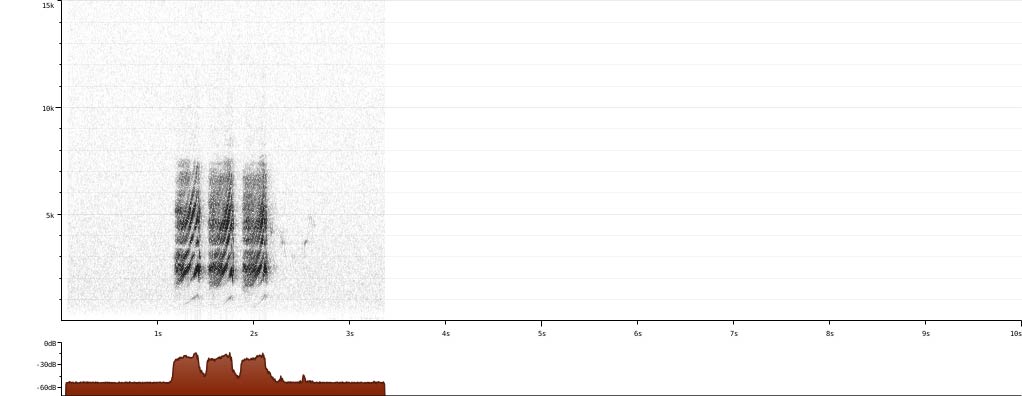
Call Type 2
I recorded the second call type on Jebel Al Qahar. Shortly after ascending the mountain, I had just pulled off the side of the road and got out of the car to record a Klaas’s Cuckoo singing from atop a nearby tree. A magpie flew up from the ground, spooking the cuckoo, and then proceeded to give a lower-pitched, intermittent call as it appeared to shift nervously on its perch. No other magpies were in the vicinity and it soon flew south in the direction of what we later discovered was a nesting site with two other individuals nearby. I believe this is the stress call given by foraging birds. The bird may have been disturbed by our arrival and, finding itself alone, became alarmed and flew off to rejoin the other members of its group.
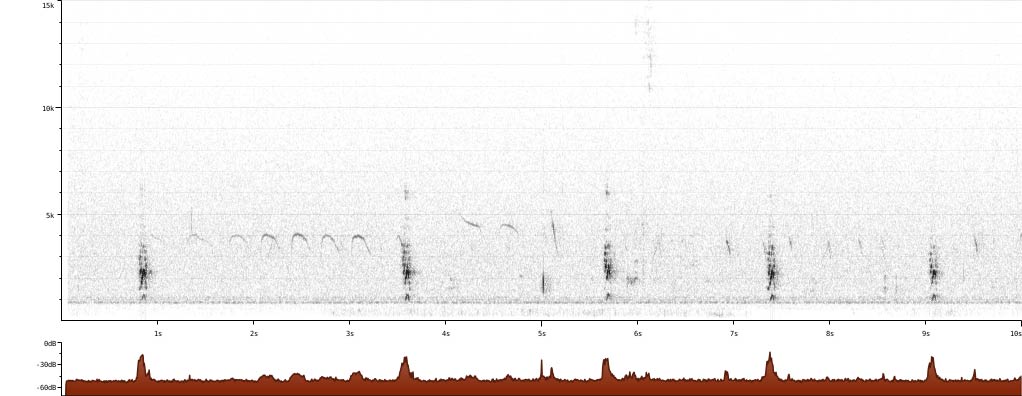
Call Type 3
The third call type, which I recorded in Billahmer, is a higher-pitched note given by what I suspect were immature birds in a foraging group of six magpies near Billahmer. The recorded individual was working its way along the side of the road, occasionally stopping to inspect objects on the ground. Later I heard it or another individual giving the same call as it followed and observed what may have been adult birds flipping over clods in a recently furrowed field.
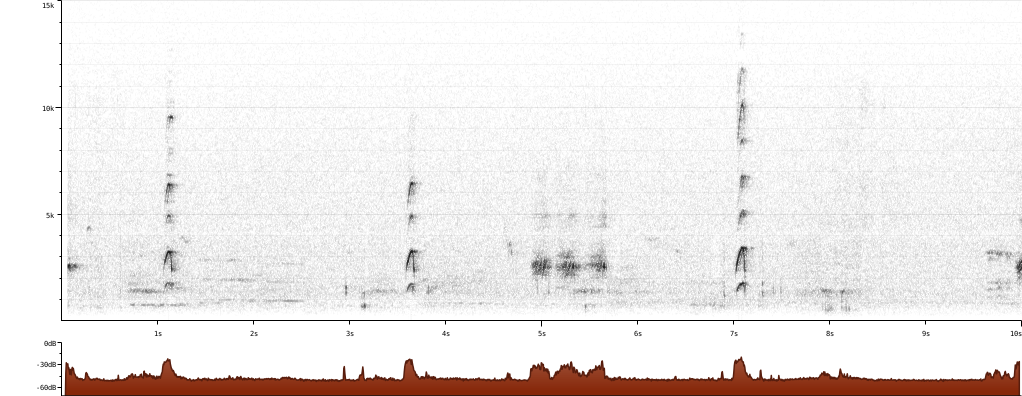
As the number of dedicated eBirders in Saudi continues to grow, the multimedia collection at The Macaulay Library for the Asir Magpie will surely be further enriched with more treasures like these.
Literature Cited
Askew, G. 2020. Macaulay Library at the Cornell Lab of Ornithology sound recording ML363391071. https://macaulaylibrary.org/asset/363391071.
Askew, G. 2021. Macaulay Library at the Cornell Lab of Ornithology sound recording ML363391631. https://macaulaylibrary.org/asset/363391631.
Askew, G. 2021. Macaulay Library at the Cornell Lab of Ornithology sound recording ML363390631. https://macaulaylibrary.org/asset/363390631.
Askew, G. 2021. Macaulay Library at the Cornell Lab of Ornithology image file ML340227441. https://macaulaylibrary.org/asset/340227441.
Askew, G. 2020. Xeno-canto sonogram XC670108. https://www.xeno-canto.org/670108.
Askew, G. 2021. Xeno-canto sonogram XC670107. https://www.xeno-canto.org/670107.
Askew, G. 2021. Xeno-canto sonogram XC670106. https://www.xeno-canto.org/670106.
Boland, C & A Suhaibany. 2020. The Birds of Saudi Arabia. Saudi Aramco, Dhahran, KSA.
Jennings, MC. 2010. Atlas of the Breeding Birds of Arabia. Fauna of Arabia 25: 489 – 90.
Jennings, MC et al. 2010. The Birds of the Highlands of South-West Saudi Arabia and Adjacent Parts of the Tihama: July 2010. NCWD, Riyadh, KSA.
Madge, S. and G. M. Kirwan. 2020. Asir Magpie (Pica asirensis), version 1.0. In Birds of the World (J. del Hoyo, A. Elliott, J. Sargatal, D. A. Christie, and E. de Juana, Editors). Cornell Lab of Ornithology, Ithaca, NY, USA. Shwamin, I. 2021. Macaulay Library at the Cornell Lab of Ornithology image file ML351402071. https://macaulaylibrary.org/asset/351402071.
